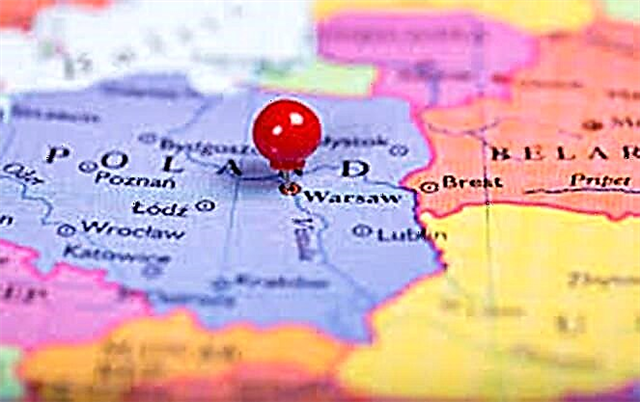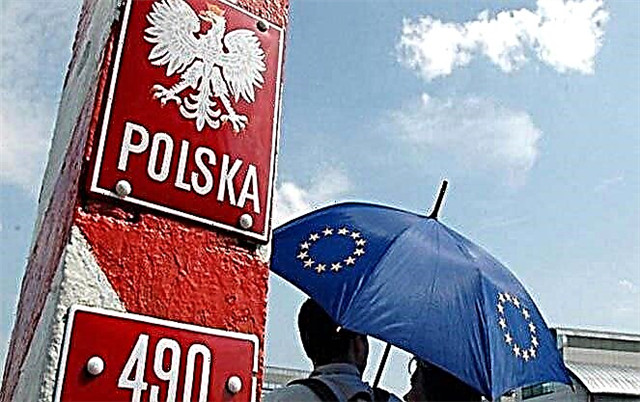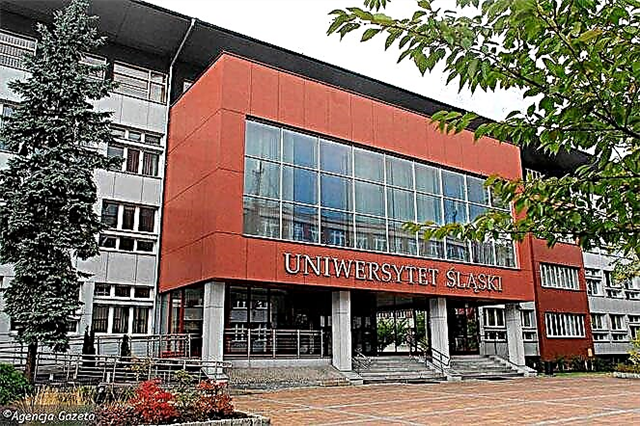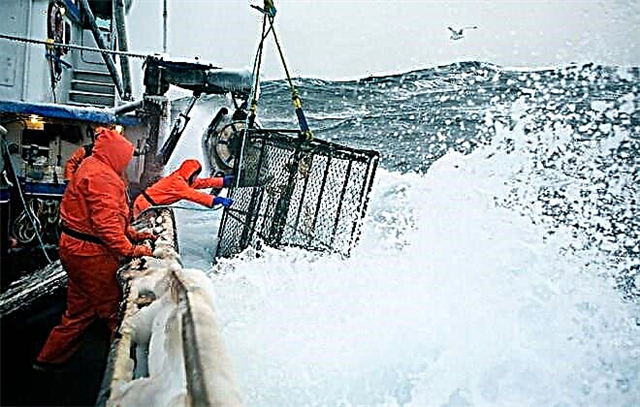One of the world's largest palace complexes (8th largest in terms of floor space) is located in the heart of modern Beijing and is one of the most visited attractions in China. The World Heritage Site has consistently served as the residence of the twenty-four rulers of the Celestial Empire.
Story
In 1406, Zhu Di - the Ming dynasty emperor - ordered the construction of a palace complex, which in its original version was built in 15 years. This coincided with the establishment of Beijing as the capital of the country.

More than a million builders have worked to create it. Most of the structures were made of wood, stone, as well as special bricks that emitted a metallic sound when struck.
For its time, the palace had unique characteristics. An underfloor heating system was specially designed for him. Hot air was supplied through pipes of a special device, so there were no stoves in the premises. Despite this, fires occurred regularly - the first one was already in the year of completion of construction.

The Ming dynasty emperors used the Forbidden City as their official residence until 1644 when northern China was conquered by Munchuria. The residence was occupied by the first representative of the Qing dynasty - Shunzhi. The palace did not change its status until 1912, when Pu Yi, the last Chinese emperor, abdicated.
- Since 1914 the Museum has been opened in it. In 1923, a fire destroyed the gardens in the Palace of Constructed Prosperity, which were only restored by 2005.
- In 1925, the Museum "Former Imperial Palace" (Gugun) was opened, the fund of which amounted to 1.17 million items.
- In 1933, after the start of the Japanese invasion of China, part of the museum exhibition was evacuated.
- After the end of the war in 1945, some of the evacuated valuables were returned back, and some were transported to Taiwan, where they are exhibited at the Museum of the Imperial Palace in Taipei.
Gugun acquired the status of a protected object under the auspices of UNESCO in 1987... Then the complex received the official name "The Imperial Palace of the Ming and Qing Dynasties." In 2008, a virtual project "Forbidden City: Beyond Space and Time" was implemented on the Internet, after visiting which one can view in English and Chinese three-dimensional models of 800 buildings and artifacts of Gugong.
Note! Currently, a large-scale restoration complex of works is underway, according to which part of the Forbidden City is periodically closed for examination and restoration.
Plan of the Forbidden City in China
The top view provides an overview of the complex of structures within a quadrangle, bounded by corner towers and walls. The structure is oriented to the cardinal points: the length from north to south is 961 m, and from east to west - 753 m... The walls were built of tamped earth, which was overlaid on both sides with bricks in 3 layers, fastened with lime mortar. Their height is 10 m, and their thickness at the base is 8.6 m.

You May Also Like
If you enter Gugong through the main southern gate with five aisles, the visitor enters the Outer (Front) Palace (Waicheng). Various ceremonies were held here. You could get to the northern part or the Inner Palace (Natin) only through a separate entrance. The Emperor could enter the Forbidden City only through a special, stone-paved and stretching along the central axis of the Imperial Way. It starts at the China Gate in Beijing and ends at Jinshan.

The central passage forms part of the Imperial Way, a stone-paved road that forms the central axis of the Forbidden City and all of ancient Beijing, and runs from the China Gate in the south all the way to Jinshan Park in the north.

The Imperial family spent their time and engaged in day-to-day government affairs in the Inner Palace.
Defensive structures of the Forbidden Palace in Beijing
On all sides Gugun is surrounded by a moat filled with water. Its width is 52 m, and the depth is 6 m. This is the first line of defense.

The second is a wall, length 3430 m... The four corners are occupied by watchtowers of a very intricate design, on which armed guards were on duty around the clock.
Outer courtyard of the imperial palace in China
Behind the southern Meridian gates, a square opens, which is crossed by the Golden Water River, bounded by a marble fence. You can cross the water barrier using several bridges.
- The two central bridges were accessible only to members of the imperial family.
- Two more were intended for military and civilian officials.
- The rest of the bridges were used by all other inhabitants of the Forbidden City.
The square rests against the Gates of the Supreme Harmony. Passing through them, the visitor enters the Hall of Supreme Harmony. From it, a white marble terrace rises upwards in three tiers, leading to three main halls: Supreme Harmony (Taihedyan), Central (Zhonghedyan) and Preservation of Harmony (Baohedian), where the emperor met with his subjects.

You May Also Like
The ceremonial center, as conceived by the architects, was the Hall of Supreme Harmony. The courtiers gathered here to report to the emperor the state of affairs in the country, and the main ceremonies were also held: coronation or wedding.
For reference! In the Hall of Central Harmony, the emperor rested between ceremonies, and in the Hall of Preservation of Harmony, rehearsals of the most important ceremonies were held. Each of the three rooms has a throne.
Courtyard
Perpendicular to the main axis of the city, there is a platform that separates the Outer Palace from the Inner Palace. During the Qing dynasty, the emperor both worked and lived with his family only in the Inner Palace. Only for the most important ceremonies did he go out into the Outer Courtyard.
The family part of the city was decorated with three gardens: Longevity (Ningshougong), Kindness and Tranquility (Qingin), Imperial (Yuhuayuan).
The central part of the courtyard is occupied by three halls:
- Heavenly purity (Qianqingong) - intended for the emperor, who embodies Heaven and the elements of Ying. Above the throne hangs a plaque with the words "Justice and Honor."
- Unions of Yimir (Jiaotaydian) - serves as a symbol of harmony generated by the mixing of the elements of yin and yang. There are 25 imperial seals created in the Qing era, as well as other ceremonial accessories.
- Earthly tranquility (Kunningong) - reserved for the empress, who personifies the elements of the Earth and yang.
The northeastern part of the Courtyard is occupied by the Palace of Serene Longevity. Emperor Qianlong built it by mirroring the layout of the entire Forbidden City.

The entrance to it is decorated with a beautiful Nine Dragons Screen made of glazed tiles.
Forbidden city in numbers
Some numbers give an accurate idea of the structure:
- age - 6 centuries;
- area - 720 thousand square meters;
- the length of the surrounding ditch is 3800 m;
- number of buildings - 980;
- the number of exhibits in the museum is more than 1 million;
- the number of rooms - according to legend, it is believed that 9999 (1 less than in the palace of the Heavenly Emperor), but according to the official Chinese version - 8704;
- a marble slab decorated with carvings in front of the Hall of Supreme Harmony - weighs 250 tons (3 × 16.5 m and 1.7 m thick).
It is interesting! To deliver the largest stone for construction from the Fanshan quarries, a 70 km road was paved with wells every 50 m.

In winter, the road was flooded with water and over ice 20 thousand workers along with 10 thousand mules dragged the slab to the palace (then its weight was equal to 300 tons).
Origin of name
It is no coincidence that the Forbidden Gugun was called from the moment of its construction: the commoners, who were forbidden to get inside, were threatened with a painful and slow death penalty.
Only people of noble birth had the right to be outside the walls of the Forbidden City, and access was strictly distributed according to the degree of nobility of each visitor, so only members of the emperor's family used part of the passages.
How to get to Gugun (map)
The easiest way to get to Gugong from anywhere in Beijing is by subway. Landmark - Tian'anmen East station, exit "A". It is located 100 meters from the Gugun Gate.

You can also get off at another Tian'anmen West station, exit "B", then you will have to walk 200 m.
How much does the ticket cost
The entrance to the Forbidden City is paid. Tickets are purchased at the ticket office at the Noon Gate. Each of the tickets is valid only on the day of purchase. If tourists come as part of an excursion group, then the guide buys tickets for them in advance.
Note! There are several cash desks, the aisles are separated by fences, which is why there are no crowds and there are no too long queues.
The cost depends on the route. Visitors are offered a large price list, in which the price is called from 5 yuan - only the palace park. The cost depends not only on the length of the route, but also on the season:
- from April 1 to October 31 - 60 yuan full ticket;
- from November 1st to March 31st - 40 RMB full ticket.
note! The Hall of Hours and the Treasury require separate tickets of 10 RMB each. Children below 120 cm are admitted free of charge.
Opening hours
The mode also depends on the season:
- from April 1 to October 31 - from 8.30 am to 5 pm, and ticket sales stop at 4 pm;
- from November 1 to March 31 - from 8.30 a.m. to 4.30 p.m., and ticket sales stop at 3.30 p.m.
What you need to know before visiting
Tourists can use the services of tour guides, but it is quite difficult to find those who speak Russian. It is best to use the Russian audio guide, which can be obtained at special points at the entrance gates. A deposit of 100 yuan is left for it, and a fee of 40 yuan is charged for use.
Note! You can take pictures of everything inside, and for free. It is strictly forbidden to remove the guard, for which there is a serious administrative penalty.
How long will the visit take
It all depends on the chosen route. When buying the most expensive ticket, you should take the whole day to see Gugun.
To do this, you need to arrive at 9 am, go to the ticket office for a ticket, and spend time inside before closing. According to experienced tourists, the shortest inspection will take at least 4 hours.
Central Axis Building Inspection
To do this, follow the route:
- The midday gate, behind which opens the main square of the Outer Courtyard with the Golden Stream;
- The Gates of the Supreme Harmony, behind which there are successively three halls of harmony with the imperial thrones;
- The Gate of Heavenly Purity (Gate of Heavenly Peace) leads to the Palace of Heavenly Purity, then to the Hall of Unity and Peace, and from there to the Hall of Earthly Peace.

Usually, after that, they inspect the Imperial Garden, and if they wish to extend the excursion, they go to other buildings open to the public.
Other buildings in the Forbidden City
The most interesting buildings of Gugun:
- Hall of Improvement and Reason - serves as a vivid illustration of the everyday life of the emperor.
- 6 Western and 6 Eastern palaces - the emperor's concubines lived here.
- The Rain and Flowers Pavilion is a Buddhist temple.
- Palace of Peace and Longevity - Emperor Tsanlong went here after the end of 60 years of reign, the building is a miniature copy of the entire Gugong.
But even this is not a complete list of what the Closed City (China) can surprise with. Lovers of history and foreign traditions will spend their time here with great pleasure.
Interesting Facts
There are quite a few of them, but here are the most curious ones:
- When designing the city, astronomers argued that the place of construction was the navel of the Earth.
- The wedding of the head of the empire took place in the absence of the empress, who did not take any part in the numerous ceremonies held.
- Legend has it that the project of the future city was dreamed of by a monk, who captured his dream and handed it over to the emperor, who brought the plan to life.
- In front of the most important throne of the emperor, bronze bowls are installed on special pedestals. Their purpose is to extinguish an accidental fire that occurred with enviable regularity.
- According to last estimates, during the peak season - in summer, the city is visited by about 7 thousand tourists a day (not even every 10th of them is Chinese!).
- Translated from the Chinese, the palace is "purple", named after the Pole Star, where the Heavenly Emperor lives.
What to combine inspection with Gugun
Travel can be made even more interesting. Near the Forbidden City are:
- Jinshan Park is an artificial 5-summit hill, built from the land that was removed during the construction of the palace complex. Area - 230,000 m², height - 45, 7 m. Five peaks are crowned with palaces-pavilions.
- Beihai Park is the largest and most beautiful in Beijing, occupying an area of 69 hectares, more than half of the area being Lake Beihai. There are temples, palaces, pavilions, and among them - statues and much more. In the middle of the lake is the Qionghua Island, the center of which is crowned with a 40-meter white-stone carved stupa.
A visit to Gugong is part of a must-see excursion program for many tourists in old Beijing. Only here you can get a reliable idea of what the life of Chinese emperors looked like - ceremonial and everyday.











